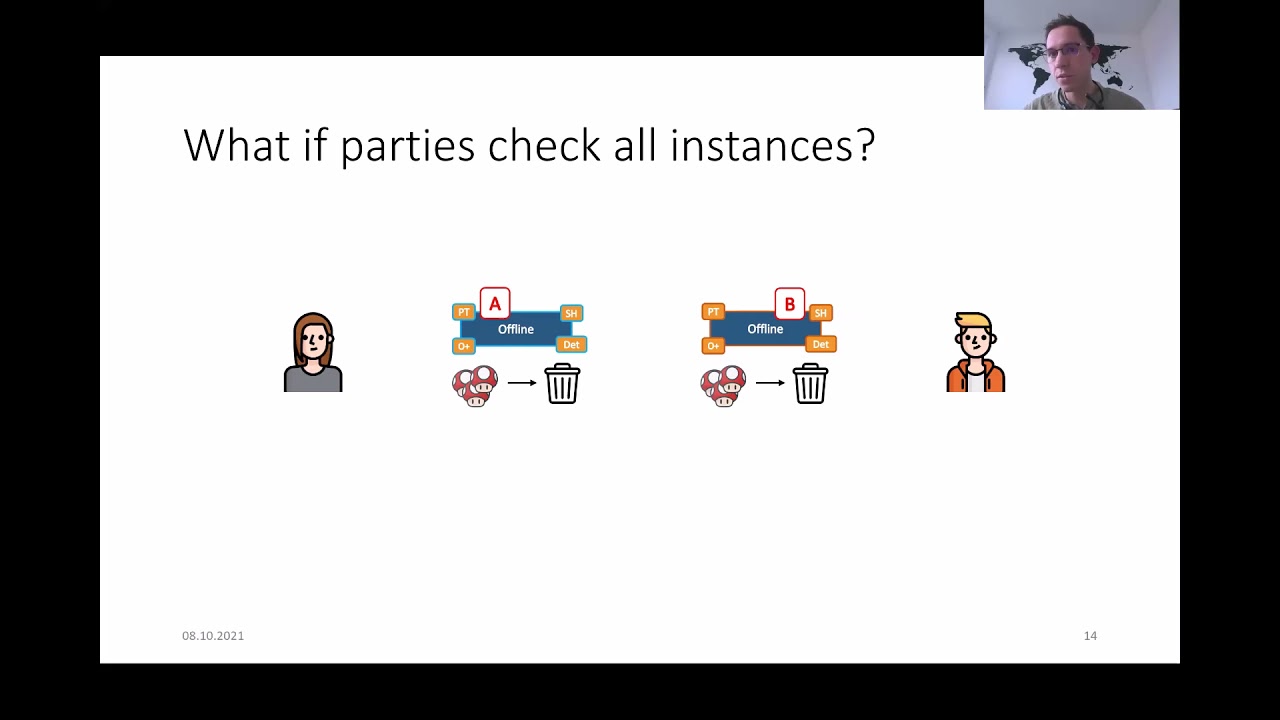Welcome to the resource topic for 2021/251
Title:
Generic Compiler for Publicly Verifiable Covert Multi-Party Computation
Authors: Sebastian Faust, Carmit Hazay, David Kretzler, Benjamin Schlosser
Abstract:Covert security has been introduced as a compromise between semi-honest and malicious security. In a nutshell, covert security guarantees that malicious behavior can be detected by the honest parties with some probability, but in case detection fails all bets are off. While the security guarantee offered by covert security is weaker than full-fledged malicious security, it comes with significantly improved efficiency. An important extension of covert security introduced by Asharov and Orlandi (ASIACRYPT’12) is public verifiability, which allows the honest parties to create a publicly verifiable certificate of malicious behavior. Public verifiability significantly strengthen covert security as the certificate allows punishment via an external party, e.g., a judge. Most previous work on publicly verifiable covert (PVC) security focuses on the two-party case, and the multi-party case has mostly been neglected. In this work, we introduce a novel compiler for multi-party PVC secure protocols. Our compiler leverages time-lock encryption to offer high probability of cheating detection (often also called deterrence factor) independent of the number of involved parties. Moreover, in contrast to the only earlier work that studies PVC in the multi-party setting (CRYPTO’20), we provide the first full formal security analysis.
ePrint: https://eprint.iacr.org/2021/251
Talk: https://www.youtube.com/watch?v=1hs7m9ssC60
Slides: https://iacr.org/submit/files/slides/2021/eurocrypt/eurocrypt2021/361/slides.pptx
See all topics related to this paper.
Feel free to post resources that are related to this paper below.
Example resources include: implementations, explanation materials, talks, slides, links to previous discussions on other websites.
For more information, see the rules for Resource Topics .
